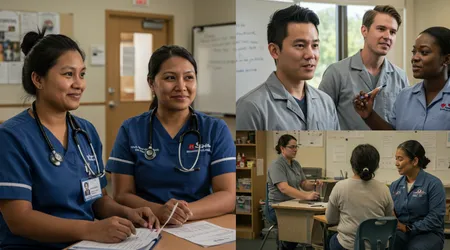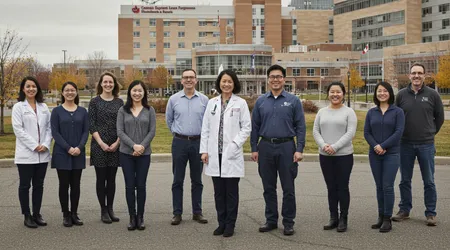Canada Expands Student Loan Forgiveness to 10 Rural Health & Social Service Professions

Canada expands student loan forgiveness to include ten additional professions, a bold move announced in March 2025 to address critical shortages in rural and remote communities.
This policy, rooted in Budget 2024, targets health and social service professionals, incentivizing them to serve underserved areas.
The expansion builds on a program launched in 2013, initially for doctors and nurses. Now, it embraces early childhood educators, dentists, pharmacists, and more.
Why does this matter? Rural Canada faces persistent workforce gaps, and this initiative aims to bridge them.
This article explores the policy’s implications, its potential to reshape rural communities, and what it means for young professionals.
The federal government’s commitment reflects a strategic response to Canada’s growing healthcare and social service demands. With populations swelling, particularly in rural areas, access to quality services remains uneven.
The expanded loan forgiveness program seeks to attract talent where it’s needed most. By offering financial relief, it encourages professionals to relocate, addressing both immediate needs and long-term sustainability.
This isn’t just about debt relief it’s about building stronger, healthier communities.
A Lifeline for Rural Communities
The Canada expands student loan forgiveness initiative targets professions critical to rural vitality.
Family physicians and nurses have benefited since 2013, with 17,921 professionals receiving $172.2 million in loan forgiveness by March 2022.
Now, the program includes dentists, midwives, teachers, social workers, psychologists, pharmacists, dental hygienists, physiotherapists, and personal support workers. These roles address diverse community needs, from mental health to education.
Rural Canada often struggles to retain skilled workers. Small towns lack the allure of urban centers, yet their needs are acute. A dentist in Fort St. John or a teacher in Hawkesbury can transform local access to services.
By forgiving up to $40,000 for doctors and $20,000 for others over five years, the government incentivizes relocation. This financial carrot could shift career decisions for many.
Imagine a young pharmacist, Sarah, burdened with $60,000 in student debt. She hesitates to move to a remote town like Fort Frances.
++ AI in Classrooms: Innovative Pilot Programs Reshaping Learning in 2025
Loan forgiveness changes the equation, making rural practice viable. The policy doesn’t just ease debt it opens doors to meaningful careers. Communities gain expertise, and professionals gain financial freedom. Isn’t that a win-win?
The program’s expansion also responds to demographic shifts. Canada’s rural population, often aging, requires specialized care.
Social workers and psychologists, for instance, address mental health crises exacerbated by isolation.
Including these professions acknowledges that health extends beyond physical care. It’s a holistic approach, recognizing interconnected community needs.

How the Program Works
The mechanics of Canada expands student loan forgiveness are straightforward yet impactful. Eligible professionals must work in designated rural or remote communities, now defined as areas with populations of 30,000 or fewer.
This updated definition, effective November 6, 2024, broadens the program’s reach to over 200 communities.
Professionals apply through the Canada Student Financial Assistance Program, with forgiveness applied annually based on service duration.
| Profession | Maximum Forgiveness | Service Requirement |
|---|---|---|
| Family Physicians | $40,000 | 5 years |
| Nurses | $20,000 | 5 years |
| New Professions (e.g., Teachers, Social Workers) | $20,000 | 5 years |
Eligibility hinges on full-time employment in qualifying roles. For example, a social worker in a remote Indigenous community could see $4,000 forgiven annually.
The process requires documentation, such as employment verification, ensuring accountability. Comments on the proposed regulations were accepted until March 17, 2025, reflecting public input.
Take Michael, a recent physiotherapy graduate. He moves to a small Manitoba town, serving elderly residents. His $30,000 loan shrinks significantly over five years.
Also read: Automatic RESP Enrollment Begins in 2028: How Parents and Kids Will Benefit
This structure rewards commitment, not just temporary stints. It’s a practical solution, aligning personal financial goals with public service.
The program’s design also considers equity. Rural communities, often home to Indigenous populations, face unique challenges.
Expanding eligible professions ensures broader service coverage, from early childhood education to dental care. It’s a targeted effort to address systemic gaps, not a one-size-fits-all fix.
Why This Matters for Canada’s Future
The Canada expands student loan forgiveness policy isn’t just about debt relief it’s about strategic workforce planning.
Rural areas face a projected shortage of 78,000 healthcare workers by 2030, according to a 2023 Health Canada report.
This initiative aims to attract 27,800 professionals over the next decade. By easing financial burdens, it encourages young talent to fill these gaps.
Read more: How to Get a Student Visa for Canada: Everything You Need to Know
Economic benefits ripple outward. Professionals in rural areas spend locally, boosting small economies. A teacher in a remote community might inspire a new generation, while a pharmacist ensures medication access.
These roles create stability, reducing urban-rural disparities. The policy aligns with Canada’s broader immigration and labor market strategies, like the updated Post-Graduation Work Permit (PGWP) program, which prioritizes health and education fields.
Consider the analogy of a garden: rural communities are fertile soil, but without skilled hands to tend them, they wither.
Loan forgiveness plants seeds professionals who cultivate growth. Neglecting these areas risks barren outcomes. This policy nurtures potential, ensuring communities thrive.
Yet, challenges remain. Will enough professionals relocate? Rural life demands adaptation fewer amenities, harsher climates. The financial incentive must outweigh these hurdles.
Additionally, the program’s success depends on streamlined administration. Past delays in loan forgiveness processing frustrated applicants, a kink the government must iron out.
Addressing Criticisms and Challenges
Skeptics question whether Canada expands student loan forgiveness will deliver. Some argue it diverts funds from broader education reforms.
Others worry about “brain drain” from urban centers. But these concerns miss the point: rural shortages are a national issue. Neglecting them strains the entire healthcare system, as urban hospitals absorb overflow from underserved areas.
Administrative hurdles pose another challenge. Applicants must navigate bureaucracy, from proving employment to meeting community criteria.
Streamlining this process is critical. The government’s consultation period, ending March 2025, allowed feedback to refine regulations. Transparency in implementation will build trust.
Critics also note the program’s cost. Forgiving $172.2 million for 17,921 professionals by 2022 wasn’t cheap. Expanding to ten more professions increases the tab.
Yet, the investment pales against the cost of unaddressed shortages emergency room closures, delayed care, and economic stagnation. It’s a calculated trade-off.
The policy’s focus on rural areas also raises equity questions. Why not urban underserved communities? The answer lies in scale: rural shortages are more acute, with fewer alternatives.
Still, future expansions could consider urban needs, balancing the equation. For now, the focus remains on where the need is greatest.
A Call to Action for Young Professionals

For graduates, Canada expands student loan forgiveness offers a unique opportunity. Imagine graduating with $50,000 in debt, then landing a job in a rural community.
Over five years, a significant chunk vanishes, freeing you to save, invest, or start a family. This isn’t just financial relief it’s a career catalyst.
Take action now. Research eligible communities, like Fort St. John or Hawkesbury. Connect with local employers, many of whom partner with the program.
The application process, while detailed, is navigable with preparation. Don’t let bureaucracy deter you your skills are needed.
The policy also signals a cultural shift. Serving rural areas isn’t a sacrifice; it’s a calling. Professionals gain unique experiences, from community trust to diverse caseloads.
A psychologist in a remote town might address trauma in ways urban peers rarely encounter. It’s rewarding work with tangible impact.
Universities can play a role too. By promoting rural placements, they can prepare students for these opportunities.
Career fairs, rural internships, and mentorships could bridge the gap. The government’s investment deserves institutional support to maximize impact.
The Broader Impact on Society
Beyond individual benefits, Canada expands student loan forgiveness reshapes society. Rural communities gain stability, attracting families and businesses.
A well-served town is more likely to thrive, reducing urban migration. This strengthens Canada’s social fabric, fostering cohesion.
The policy also sets a precedent. By prioritizing public service, it signals that careers in health and social services are valued.
This could inspire future expansions, perhaps to urban areas or other sectors. It’s a step toward a more equitable workforce distribution.
Moreover, it addresses systemic inequities. Indigenous communities, often rural, benefit disproportionately.
A midwife or social worker in these areas can improve health outcomes, closing gaps in life expectancy and care access. It’s a small but meaningful step toward reconciliation.
Finally, the program enhances Canada’s global reputation. By investing in rural vitality, the country showcases a commitment to universal healthcare and education.
It’s a model other nations could emulate, proving financial incentives can address systemic challenges.
Conclusion: A Step Toward a Stronger Canada
The Canada expands student loan forgiveness initiative is more than a financial program it’s a vision for a healthier, more equitable Canada.
By targeting rural shortages, it addresses immediate needs while building long-term resilience. Young professionals gain freedom from crippling debt, while communities gain essential services.
The policy’s success hinges on execution streamlined processes, clear communication, and sustained funding.
As Canada grows, so must its commitment to underserved areas. This expansion, announced in 2025, is a promising start. Will you seize this opportunity to shape your future and Canada’s?
Frequently Asked Questions
Who qualifies for the expanded loan forgiveness program?
Professionals like teachers, social workers, and pharmacists working full-time in rural or remote communities with populations of 30,000 or fewer.
How much loan forgiveness can I receive?
Family physicians can receive up to $40,000 over five years; other eligible professions, including new ones, up to $20,000.
When does the expansion take effect?
The program is expected to roll out in 2025/26, pending regulatory approval, with public comments accepted until March 17, 2025.
Can urban professionals qualify?
No, the program focuses on rural and remote areas, defined as communities with 30,000 or fewer residents, to address acute shortages.
How do I apply?
Apply through the Canada Student Financial Assistance Program, submitting employment verification and proof of service in a qualifying community annually.
Citations:
